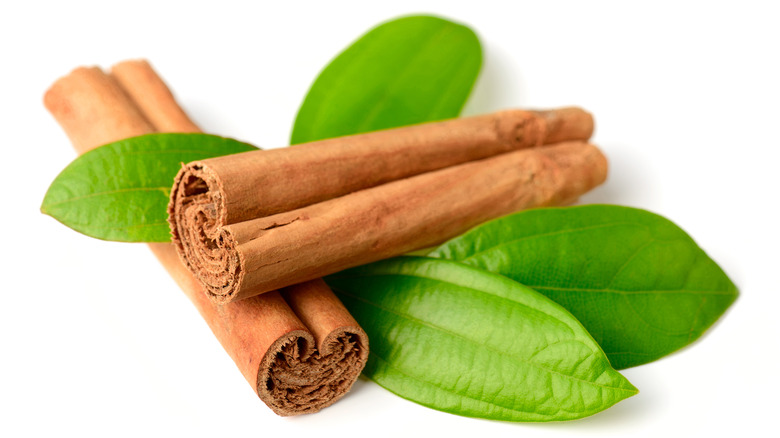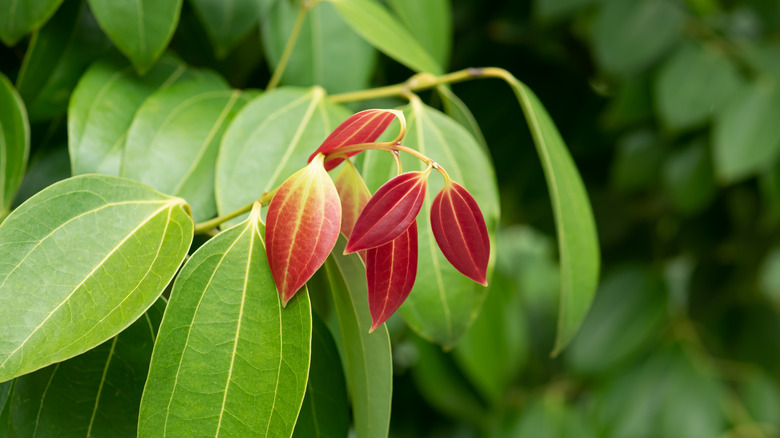How Cinnamon Leaves Add The Extra Spice You're Looking For
We all know about cinnamon, an aromatic spice, commonly used in both sweet and savory dishes worldwide. Either used ground or from a whole stick, pure cinnamon comes from the bark of Cinnamonum verum trees (via Smithsonian Magazine). Cinnamon leaves, however, are not as well known as their bark counterpart. Growing on the branches of the Cinnamomum verum, cinnamon leaves tend to have a less intense taste and aroma than cinnamon bark when cooking (via Just Go To Chef).
Cinnamon leaves are known to have been around since ancient times and are believed to have come from Burma, Sri Lanka, Bangladesh, and India. It is said they were spread by Arab traders originally but today can be found in specialty markets (via Specialty Produce). These days, cinnamon leaves are commonly used in their dried state or as an aromatic oil. When the use of cinnamon bark is so common, why should we even be considering the use of cinnamon leaves?
Cinnamon leaves: what you need to know and how to use them
Epicurious notes that although cinnamon leaves are "spicy and pungent," they're less strong than cinnamon bark. Cinnamon oil, on the other hand, is known for its "musky aroma with strong notes of clove and citrus" (via Specialty Produce). Whether used as a dried leaf or oil, there are many ways to incorporate cinnamon leaves into your meal. When used in their dried state cinnamon leaves can be easily swapped out in recipes that call for dried bay leaves. Used quite often in Indian and Jamaican cooking, it is common to find cinnamon leaves, in either the dried or oil form, being used in stews, pilafs, curries, jerk seasoning, or even in baked goods (via Specialty Produce).
On top of their wonderful flavor, cinnamon leaves are also known to have some benefits. According to Livestrong.com, cinnamon leaves are antibacterial which aid in digestion and help your immune system fight harmful bacteria. On top of other health benefits, such as reducing gastrointestinal symptoms such as nausea and diarrhea, it may act as a natural pain reliever, and possibly even an aphrodisiac.
So why not give it a shot? Try cinnamon leaves out the next time a recipe calls for a bay leaf or find a recipe that specifically calls for them. If you're feeling adventurous you can even use them to make some tea!

